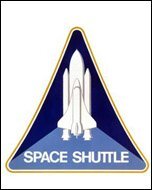For Susan Darnell Ellis, NASA’s teacher-in-space program offered her a way out of rural western Kentucky, where she was born and bred, went to school and college, and started her teaching career.
“I was ready for something different,” she says.
At 27, she had taught at North Marshall Junior High School for just over five years—the minimum requirement for the competition.
But she had incorporated space into her environmental science class and had brought a team of students to the International Science Fair. She also was restless.
She hesitated entering the competition, afraid her then-husband would object. “I didn’t want to rock the boat of my marriage,” says Ellis, whose married name at the time was Darnell.
But he surprised her by suggesting it himself. “It was like a godsend, a miracle,” Ellis recalls.

|
But when the application arrived just two weeks before the Jan. 31, 1985, deadline, an interval filled by two weeks of teaching responsibilities, she says she looked at the 10 formidable essay questions “and almost threw it in the garbage can.”
That night, in a second “miracle,” a snow began to fall, accumulating to 20 inches and canceling school for most of the next two weeks.
Working in a frenzy, she made 20 drafts of each essay and sent out surveys to her 150 students and their parents to learn what kind of experiments they would like to see done on the space shuttle.
After a videotaped interview, she was named one of the two Kentucky state finalists.
But she got some other news that week that nearly made all that work for naught: She was pregnant. Her baby was due in October, and the flight was scheduled for the following January.
When NASA learned of her pregnancy, someone at the agency told her she was out of the running.
“I had to teach the rest of the day [after hearing from NASA], but it was the hardest day of my life,” Ellis says.
But her support team mobilized, she says. Her mother and college professors went to women’s groups and “bombarded” NASA, urging the agency to keep her in the competition. Soon, NASA relented, deciding that since women were now in the astronaut corps, the agency would have to find ways to accommodate pregnancy.
Although Ellis believes she had no chance from that point to be chosen, she holds no grudge against NASA.
In fact, after working for the state education department to develop curricula and train teachers, she got a job with the space agency. Still based in Kentucky, Ellis is a curriculum and staff-development specialist for NASA’s Aerospace Education Services Program.
“This has been a life-changing event,” Ellis, now 39, says of the teacher-in-space experience. “It was like a snowball that moved very fast and furious.”
